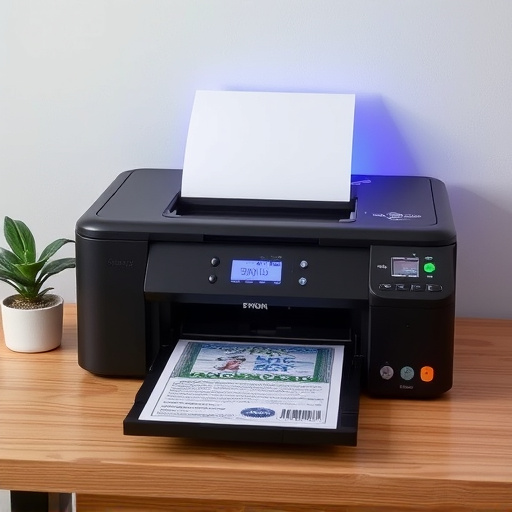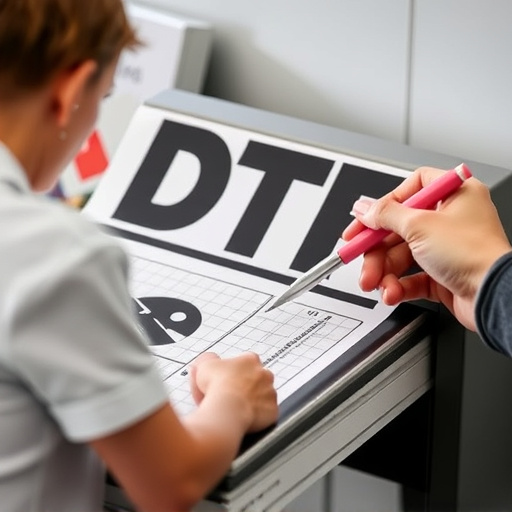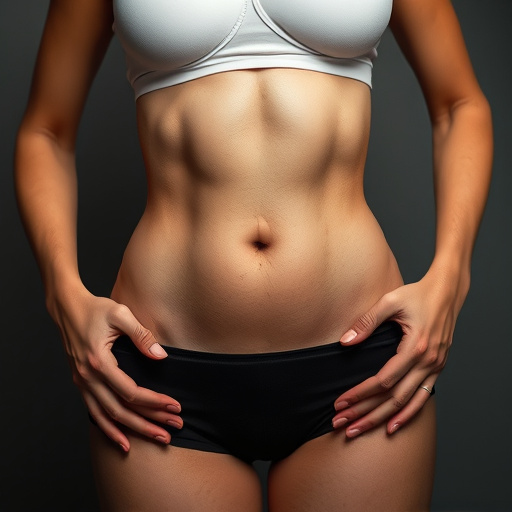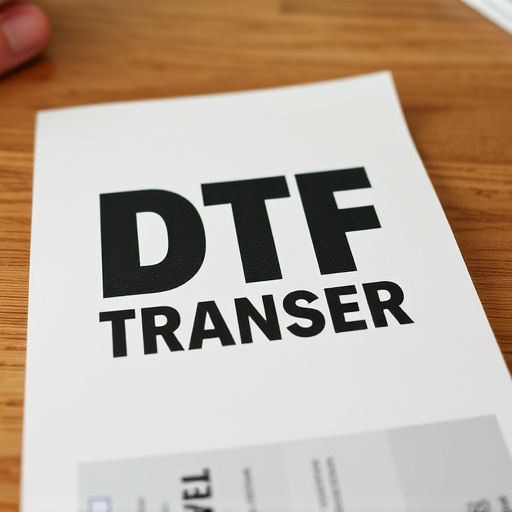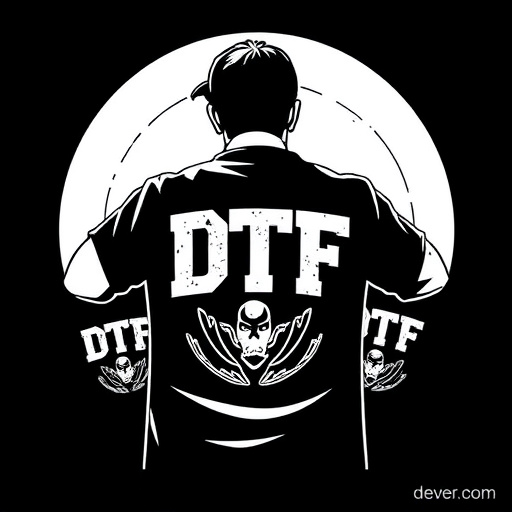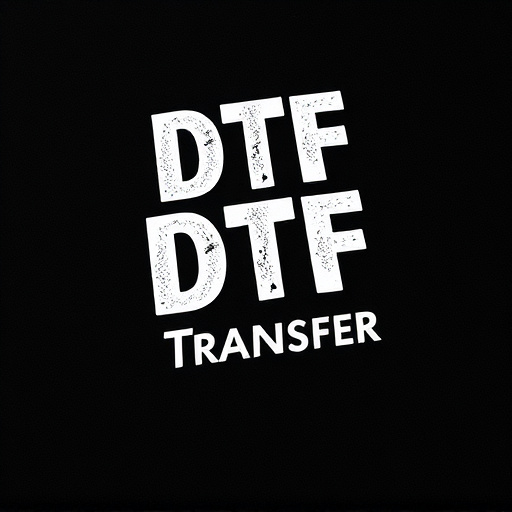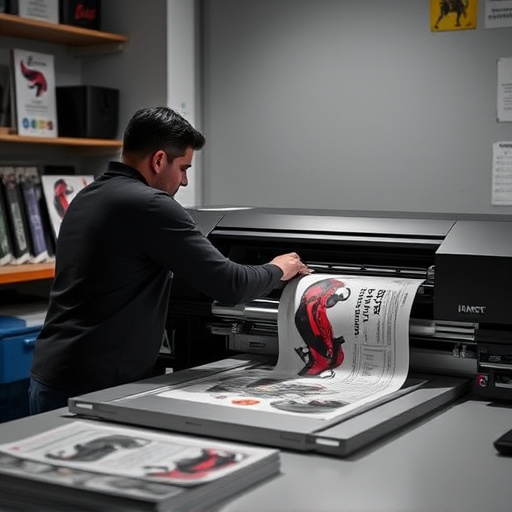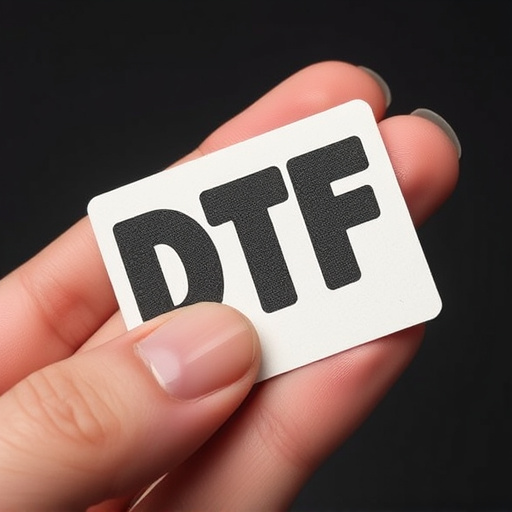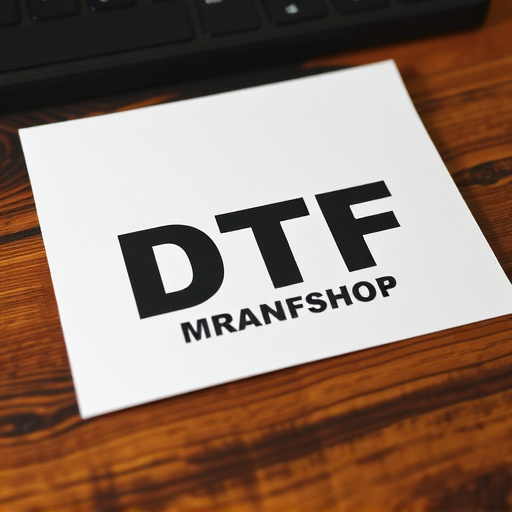Direct-to-film (DTF) transfers are transforming custom printing for t-shirts by offering unparalleled precision, vibrant colors, and extensive design flexibility. The process involves printing high-resolution digital images on special transfer film, which is then applied to fabrics using heat press machines. DTF transfers revolutionize personalized garment creation with their versatility, accessibility, and ability to reproduce intricate designs on various fabric types for both small-scale and bulk orders. Choosing the right materials and equipment, including top-tier transfer paper and reliable printers, ensures excellent results, while DTF's creative freedom allows artists to bring detailed artwork featuring photos, illustrations, and special effects directly onto fabric.
Discover the revolutionary world of DTF Transfers—a game-changer in t-shirt decoration. This comprehensive guide explores the art of using direct-to-film transfers to create vibrant, durable designs on textiles. From understanding the technology to choosing the right materials and unlocking creative possibilities, we delve into the benefits and intricacies of DTF Transfers. Enhance your t-shirt design game with this in-depth overview, offering tips for achieving exceptional results.
- Understanding Direct-to-Film (DTF) Transfers: A Comprehensive Overview
- Benefits of DTF Transfers for T-Shirt Decoration
- The Process: How DTF Transfers Work on T-Shirts
- Choosing the Right Materials and Equipment for DTF Printing
- Tips for Achieving High-Quality Designs with DTF Transfers
- Exploring Design Possibilities and Creative Ideas for DTF T-Shirt Art
Understanding Direct-to-Film (DTF) Transfers: A Comprehensive Overview

Direct-to-film (DTF) transfers are a cutting-edge method revolutionizing the custom printing industry, particularly for decorating t-shirts. Unlike traditional printing techniques that rely on ink and fabric interactions, DTF transfers use heat to fuse fine polymer particles onto textiles directly from digital files. This innovative process offers unparalleled precision, vibrant colors, and an extensive range of design possibilities. With DTF transfers, creators can effortlessly bring intricate graphics, photos, or text to life on a variety of fabrics, making it an attractive option for both personal and commercial projects.
The DTF Transfer process begins with a high-resolution digital image that is precisely printed onto a special transfer film using advanced machinery. This film serves as a carrier for the design, which can then be applied to the desired t-shirt or fabric using heat press machines. The heat activates the polymer particles, fusing them permanently onto the surface, resulting in a durable and high-quality print. This technology has democratized custom printing, enabling individuals and businesses alike to create unique, personalized garments with ease and efficiency.
Benefits of DTF Transfers for T-Shirt Decoration
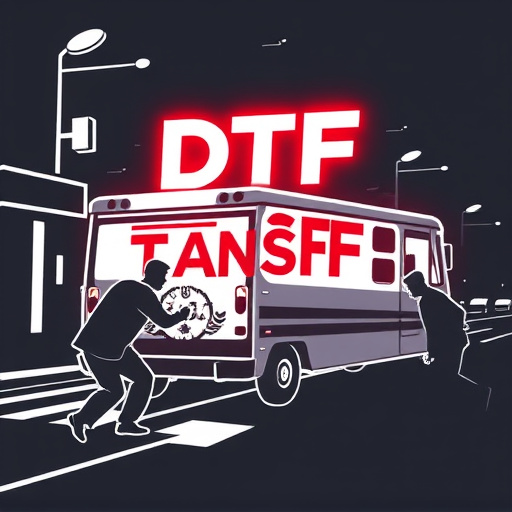
Direct-to-film (DTF) transfers offer a revolutionary approach to decorating t-shirts, providing numerous benefits over traditional printing methods. One of the key advantages is their versatility; DTF Transfers can reproduce intricate designs with exceptional detail and vibrancy, making it ideal for complex artwork and high-quality visuals. This technique allows for a seamless integration of images onto various fabric types, ensuring that decorations remain crisp and long-lasting.
Additionally, DTF Transfer technology streamlines the decoration process, making it efficient for both small-scale and bulk orders. It eliminates the need for specialized equipment, as most modern printing businesses can readily adopt this method. This accessibility ensures that custom t-shirt designs are within reach for individuals, small enterprises, and even large-scale retailers, fostering a dynamic and creative environment in the apparel industry.
The Process: How DTF Transfers Work on T-Shirts
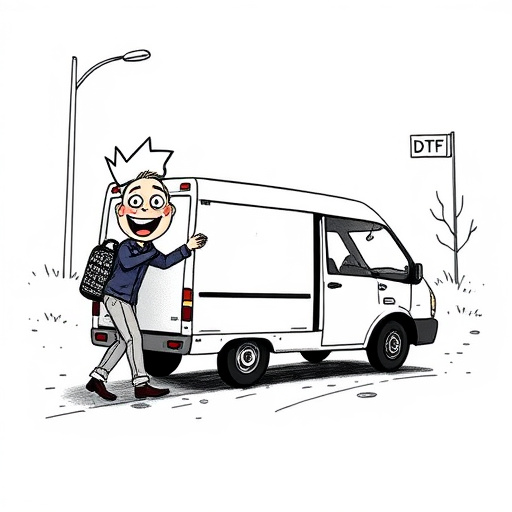
Direct-to-film (DTF) transfers have revolutionized the way t-shirts are decorated, offering a precise and efficient method for creating custom designs. The process involves transferring ink directly onto the fabric using a specialized machine that applies heat and pressure to bond the ink permanently. Firstly, the desired design is digitally printed on a special transfer paper, ensuring it aligns perfectly with the shirt’s characteristics. This transfer paper acts as a medium to carry the ink, allowing for intricate patterns and vibrant colors.
Once the design is ready, it’s placed face-down on the t-shirt, and then a heated press is used to activate the ink. The heat melts the binding agents in the transfer paper, allowing the ink to merge with the shirt’s fabric. This instant bonding creates a durable finish, making the design wash-resistant and ensuring the colors remain vibrant even after multiple washes. DTF transfers are particularly appealing for small batch productions, allowing businesses and individuals to create unique, personalized t-shirts with ease and speed.
Choosing the Right Materials and Equipment for DTF Printing

When it comes to DTF (Direct-to-Film) printing for t-shirt decoration, selecting the right materials and equipment is paramount to achieving exceptional results. The first step involves choosing high-quality DTF transfers that are compatible with your desired print surface. These transfers should offer crisp detail and vibrant color reproduction, ensuring the design pops on various fabric types. Look for products specifically designed for t-shirts, as they often include pre-cut shapes for easy application.
Additionally, invest in a reliable DTF printer, such as a heat press machine, capable of delivering precise temperature and pressure control. This equipment ensures the transfer is securely bonded to the t-shirt without smudging or peeling. A good quality printer will also support various print formats and file types, allowing for creative design possibilities. Don’t forget to stock up on appropriate ink and cleaning solutions to maintain optimal printing conditions, ensuring your DTF transfers produce long-lasting, eye-catching designs on your garments.
Tips for Achieving High-Quality Designs with DTF Transfers
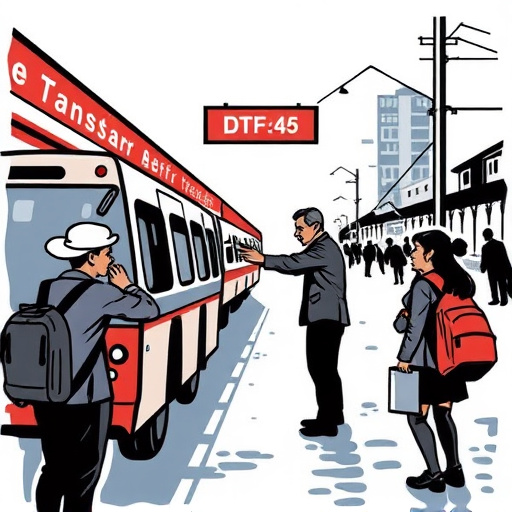
Achieving high-quality designs with DTF transfers requires a few key strategies. First, select top-tier transfer paper designed specifically for DTF printing. Lower-quality paper may result in bleeding, poor adhesion, or inconsistent color reproduction. Ensure your design is optimized for the print method; vector graphics are ideal as they offer sharp lines and detailed shapes that translate well to the material.
When preparing your design, consider the type of ink used by your DTF system. Different inks have varying levels of opacity and color vibrancy. Testing on scrap fabric before final application can help you understand how the ink interacts with the transfer paper and the shirt material, allowing for adjustments to ensure the final design looks as intended.
Exploring Design Possibilities and Creative Ideas for DTF T-Shirt Art
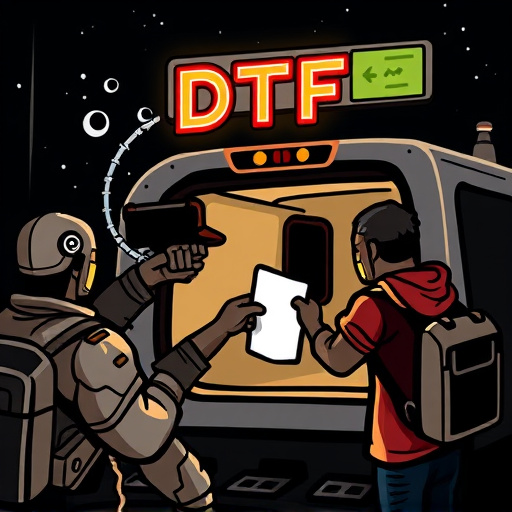
Direct-to-film (DTF) transfers open up a world of creative possibilities for t-shirt design. Unlike traditional printing methods, DTF allows for intricate, high-resolution artwork that can include photos, illustrations, and even texturized effects. This versatility makes it an appealing choice for artists and designers looking to create unique pieces. From minimalist line art to vibrant photographic prints, the sky’s the limit when it comes to exploring design ideas.
DTF transfers encourage experimentation with various creative concepts, such as layering different designs, combining media, and incorporating special effects like gloss or matte finishes. This approach allows for personalized, one-of-a-kind t-shirts that stand out from mass-produced clothing. Whether you’re inspired by nature, pop culture, or abstract art, DTF offers a platform to translate your artistic vision directly onto fabric, making it an exciting and accessible way to bring your T-shirt designs to life.




